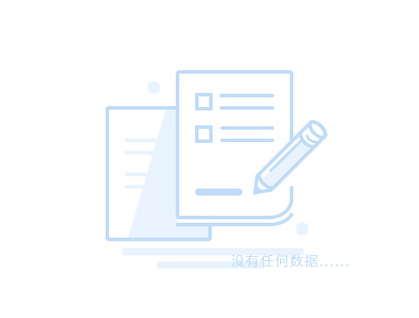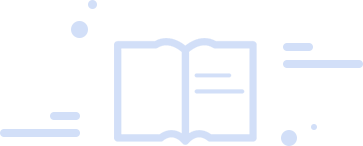1.Listen to part of a lecture in an environmental science class.
请听一段环境科学课的节选。
2.Professor: The Chesapeake Bay on the east coast of United States is huge.
教授:美国东海岸的切萨皮克湾很大。
3.The largest estuary in the U.S., and it’s very important to local economies.
它是美国最大的河口湾而且对当地经济非常重要。
4.But like many of the world’s waterways, the Chesapeake is being polluted.
但是像世界上很多水路一样,切萨皮克正在被污染。
5.And efforts to stop that from happening have not been entirely successful.
而且防治污染的努力并不是十分成功。
6.And that’s partly because of the type of pollution affecting the Chesapeake which may not be what you might predict.
部分原因是影响切萨皮克的污染类型可能是你无法预测的。
7.Um, first let’s mention that the sources of pollution are of two general types.
首先需要说一下污染源主要分两大类。
8.And let’s begin with what’s known as point source pollution.
让我们先讲点源污染。
9.Point source pollution has an identifiable source
点源污染有一个明显的来源
10.and you can find the specific point where say one particular pipe is dumping pollutants into the bay.
而且你能发现它特定的地点,比如说一个地方有一根特定的管子把垃圾倾倒到河湾中。
11.And then treat the water right there where the pollution's coming from.
然后我们就在污染来源地处理污水。
12.And that’s what's happened over the past thirty years or so.
过去30年都是用这种方式治理的。
13.Modifications have been made in factories and sewage treatment plants to treat polluted water before it’s released into public waterways.
工厂和污水厂做了一些改变,在污水流入公共水道之前就对其进行了处理。
14.But there’s also something we call non-point source pollution.
但是也有一类污染,我们称之为非点源污染。
15.Nowadays the most serious pollution threat doesn’t come from any particular source like a factory or sewage treatment plant,
现在大部分严重的污染处理不是来自于任何特定的来源比如说工厂或者污水厂,
16.but originates from many sources over a large area.
而是源自于很大范围内的各个来源。
17.And this non-point source pollution is a challenge to deal with
这种非点源处理方法是一种挑战
18.because it doesn’t just enter the bay through one pipe.
因为它不是仅仅通过一根管子进入到河湾。
19.You can’t identify precisely where it’s coming from.
你不能精确地识别污染来自于哪里。
20.And to be specific, the biggest problem now facing the Chesapeake Bay is due not to toxins but to nutrients contained in chemical fertilizers used on farms all over the region.
具体一点说,现在切萨皮克湾面临的最大问题不是因为有毒物质而是因为在整个地区农业使用的化肥中的营养物。
21.These nutrients like phosphorus and especially nitrogen wash away what we call agricultural runoff.
这些营养物比如说磷,特别是氮的流失我们叫做农业径流。
22.That’s when water from a hard rain or from melting snow carries these chemicals down to streams and into the bay.
来自于暴雨或者雪融化的水携带这些化学物质流入溪水并进入河湾。
23.And there they stimulate the explosive growth of algae
在水流中他们激发了海藻的爆发式生长,
24.and that uses up much of the oxygen in the water,
这消耗了水中大量的氧气,
25.oxygen that fish and other aquatic organisms need to stay alive.
这些氧气是鱼和其它水生有机物存活所必需的。
26.So since there is no single place you can treat the runoff before it reaches the bay,
所以正因为在水进入河湾前没有地方能让你处理这些径流,
27.any efforts to reduce this non-point source pollution generally need to be aimed at keeping pollution out of the streams in the first place.
任何要减少这种非点源污染的努力都集中于在最开始不让污染物进入溪流。
28.But before we go into that, let’s look at the role of nitrogen fertilizer in modern farming.
但是在我们讲这个之前,让我们看一下氮化肥在现代农业当中的重要作用。
29.Until about sixty years ago, before a great increase in industrialization, this wasn’t a problem.
直到60年前,在工业化加剧增长之前,这不是问题。
30.In the past, farmers use natural fertilizers,and rotated crops so that in addition to commercial food crops like corn and wheat,
在过去,农民使用自然化肥,而且轮种农作物,所以除了像玉米和小麦这样的经济作物,
31.they might plant legumes like alfalfa and clover for animal feed.
他们也种像苜蓿和三叶草这样的豆科植物来喂养动物。
32.But these legumes also enriched the soil by converting nitrogen in the atmosphere into nitrates, a form of nitrogen that crops like wheat or corn could use as nutrient.
但是这些豆科植物通过把空气中的氮转化为硝酸盐也在给土壤补充营养,像小麦或者玉米这样的农作物都可以用硝酸盐作为营养物。
33.And these and other cover crops, planted to hold the soil after the wheat or corn was harvested.
而且这些农作物和其他的覆盖农作物,在小麦或者玉米丰收后被种植以固定土壤。
34.They stored much of the surplus nitrogen during the time of the year when the runoff tended to be the greatest.
他们在一年中径流最多的时候存储大量的氮。
35.But farming practices changed as farmers came under pressure to use more and more chemical fertilizer in order to increase crop production on the same amount of land.
但是农业活动改变了,农民在压力下为了增加相同面积土地上的作物产量而不得不使用越来越多的化肥。
36.But more isn’t always better, at least in terms of chemical fertilizer in the environment.
但是更多不总是意味着更好,至少在环境中的化肥用量这点来看。
37.And along the way, farmers switch from legumes to animal feeds more suited to intensive large scale animal production.
照这样发展,农民们不再种豆类植物而是使用更适应大规模集约化动物养殖的动物饲料。
38.And the excess nitrogen once trapped by these cover crops either washed away in the next big rain or went down into the groundwater and either way eventually ended up in the streams and the bay,
被覆盖作物存起来的大量的氮要么在下一场雨中被冲走要么流到地下水中,最终都会进入溪流和河湾。
39.and that as we said means more algae in the water and less oxygen for the fish and other aquatic life to breathe.
而这个,像我们刚说过的,意味着水中有更多的海藻和更少的氧气供鱼和其他水生生物呼吸。
40.So what’s being done? Well, two things.
所以现在要做什么?有两件事。
41.First, after the main crops are harvested, more farmers are planting cover crops again.
在主要作物丰收后,更多农民再次开始种植覆盖作物。
42.Other kinds like rye and barley that hold the nitrogen and keep it from washing out of the soil during the months when that's most likely to occur.
其他种类像黑麦和大麦能够固定氮并防止氮最大程度的从土壤中流失。
43.And the second strategy is to plant buffer zones at the edges of streams.
第二个策略是在溪流的边上种植缓冲区。
44.Not crops but natural areas, trees.
这些地区是自然的,种植树木的地方,没有作物。
45.The roots of these trees can absorb the excess nitrogen in the runoff before it reaches the streams.
在径流到达溪水之前,这些树木的根能够吸收其中的氮。
46.Farmers sometimes object to letting trees grow on land where they might otherwise be cultivating crops.
农民们有时候反对在陆地上种树,因为他们本可以在这些地方种植农作物。
47.But there’s a government program that compensates them,
但是有政府有个项目会弥补他们,
48.that pays them for creating these buffer zones between their fields and the streamsthat eventually feed into bays like the Chesapeake and it’s beginning to show some success.
为他们在他们的田地和最终流向如切萨皮克湾这样的海湾之间创造的缓冲区付钱。这项举措开始显示出成效。

 TPO-53 L2 Two Kinds of Pollution 退出
TPO-53 L2 Two Kinds of Pollution 退出